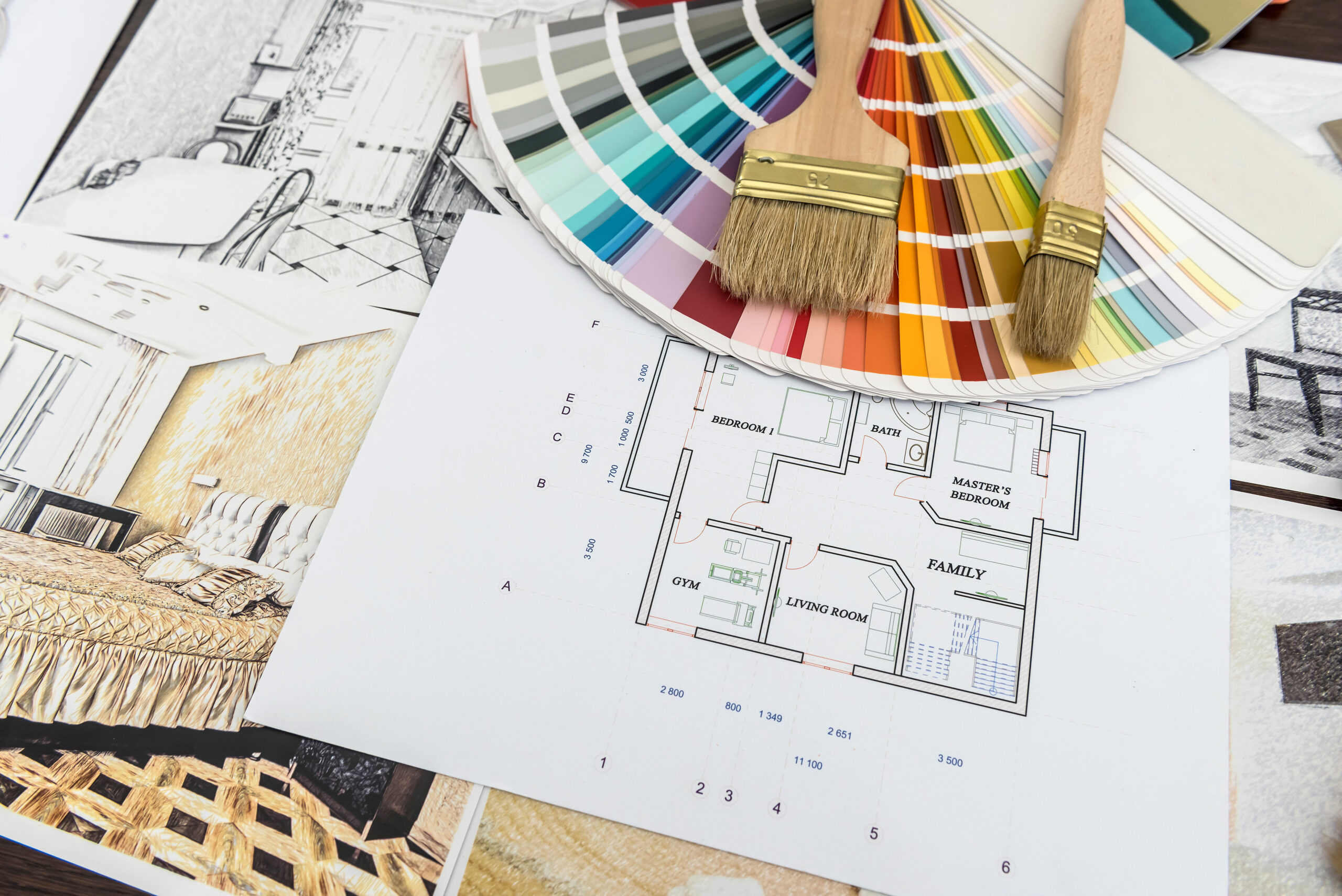
Arcitechture blueprint for renovation home. Color catalog with house sketch at office desk. Creative workday
Designing a home that meets all your needs and preferences is a dream for every homeowner. However, it’s a process that requires careful planning and execution to achieve the desired results. It’s easy to get lost in the vast construction design world and forget the key considerations that will impact your home’s design. So, we crafted this comprehensive guide to help you through the design process and to help you transform your house into your perfect home. In this guide, we will cover everything you need to know to create the perfect space that suits your needs.
Define Your Needs and Wants
Before diving into the design process, take a moment to reflect on what you truly want from your home. Consider your lifestyle needs and how your home can accommodate them. For example, if you work from home, you will need a dedicated workspace. List all the spaces and features you dream of having in your perfect home. Then prioritize the most important items on your list. Know that it’s important to separate your wants from your needs, as there will always be a practical limitation to your desired amenities.
Focus on Functionality
A home should be functional, and its layout should facilitate everyday living. When designing your plan, imagine yourself moving through your space and consider how your daily routines will be impacted. Arrange your layout so that spaces flow naturally and each room has a clear function. Consider the number of people living in your home and ensure that there is room for everyone. The furniture arrangement should be based on usage and ease of use so that you have space for everything you need.
Consider Energy Efficiency
An energy-efficient home can help you save on utility expenses while reducing your carbon footprint. During the building process, consider features such as insulation, window efficiency, and the use of renewable energy sources.
Design your home to take maximum advantage of natural light and ventilation, reducing your dependency on artificial lighting and heating. Additionally, installing smart systems can help you manage your energy usage and reduce your environmental impact.
Embrace Your Personal Style
Your home should reflect your personality and tastes. Embrace your personal style in every aspect of your home’s design. Explore different color schemes, textures, materials, and patterns that resonate with your senses. There is no right or wrong answer when it comes to style; it’s all about finding what feels right for you. You might derive inspiration from magazines, websites, or social media pages. Think about the feelings you wish to evoke in each room and create a cohesive design scheme throughout your home.
Consider Your Budget
It’s important to strike a balance between your vision and what you can afford. A good design is a practical one, and you should not compromise on quality. Before embarking on your home design journey, establish a realistic budget for your project. Research the cost of materials, furnishings, and professional services, and allow some wiggle room for unexpected expenses. You might have to prioritize some items on your list and postpone others until a later time. Always be realistic when it comes to your budget.
Work with Professionals
Collaborating with a design professional is paramount for achieving an exceptional home design. Through the expertise of a professional designer or architect, you can seamlessly integrate 3D interior visualization tools into the design process. These advanced tools provide a lifelike representation of your envisioned spaces, aiding in the creation of a functional and stylish plan that aligns with your needs and preferences. From color schemes to material choices and spatial arrangements, the incorporation of 3D visualization ensures informed decision-making. By engaging a design or architecture professional, you guarantee not only aesthetic appeal but also structural integrity, elevating your home design ideas to a new level of precision and excellence.
Designing your perfect home takes time, effort, and a good design plan. By following these tips, you will be well on your way to designing your dream home. Remember to define your needs and wants, focus on functionality, embrace your personal style, consider your budget, and work with professionals. With these basics, you can break down the design process into smaller, more manageable pieces. We hope our comprehensive guide has provided some inspiration and guidance to help you achieve your dream home design. Good luck on your journey!


